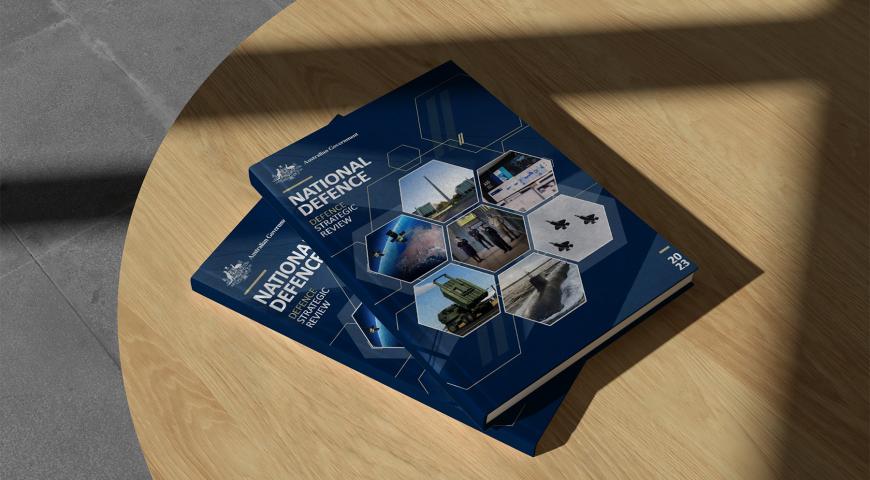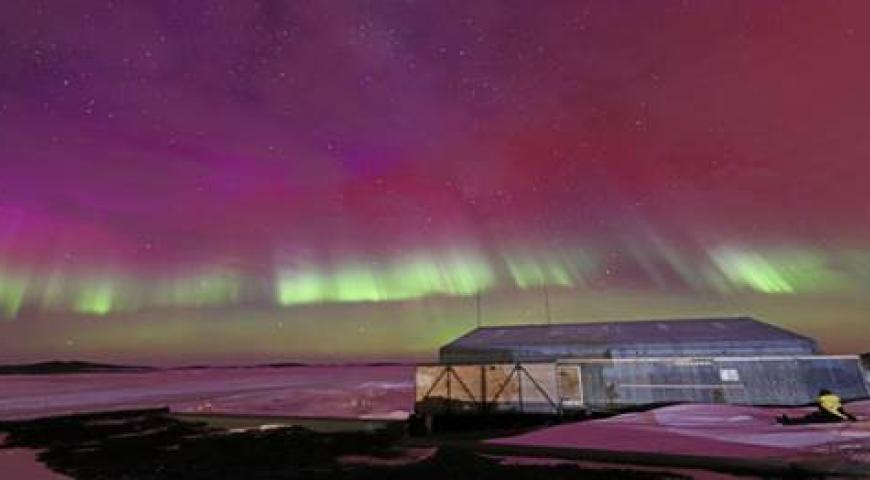In the first part of this series, we analysed observations made in real time of how different leaders managed the outbreak and spread of the COVID-19 pandemic in its early years. In Part 2, we look at whether they succeeded or failed, and what lessons can be applied to military leadership during extreme circumstances.
Did Leadership Make a Difference? Yes it did
When Leaders got it Wrong and Why
As mentioned Part 1 in this paper, the UK, the US, Brazil, (followed by Chile and Peru) and Russia all had disastrous responses to COVID-19. In fairness, these are all large countries where it might be expected large numbers of people would be affected by a pandemic, but this doesn’t fully explain how bad the response to the virus has been. In none of these countries was there a unified message about an urgent need to react. Even to this day (2020), the leaders of these countries waffle rather than lead decisively. Indeed, there was no clear admission that a crisis even existed until it was too late to do anything about it.
From the beginning of the pandemic these countries quibbled about what mattered, whether it was the economy or people’s lives. The risk of infection was constantly downplayed, allowing people to believe wild theories on the internet about COVID-19 being a hoax or caused by the 5G network. Mixed messages about the value of locking down, socially distancing, or wearing masks just continued this atmosphere of indecision and uncertainty. On 27 March, long after other countries had introduced lockdowns and strict social distancing rules, the Prime Minister of the UK, Boris Johnson, contracted COVID-19 himself after shaking hands with COVID-19 patients and others in a London hospital. [1] (Having had this near-death experience, Johnson quickly recognised the seriousness of COVID-19 and began to deal with it more effectively.)
Worse still, prestige and personal image appeared to be influencing this behaviour. In March 2020, Russia’s President, Vladmir Putin, declared to the world the pandemic was completely under control.[2] To make the point he flew unwanted medical supplies to Italy. However, by mid-June, Russia had close to 600,000 infections with thousands of new cases every day. While the reported COVID-19 death toll in Russia was lower than any similarly sized nation, the national death toll from all causes was running at 20% above the yearly norm, suggesting COVID-19 was killing many thousands more Russians than reported.[3] To make matters worse, there was a chronic under-supply of medical equipment with much of it either unserviceable, dangerous or entirely unfit for purpose.[4]
Perhaps most tragic of all was the chaotic situations in the US and Brazil. In both countries the dangerousness of the pandemic was largely hidden from the general public, leading to mass confusion about what people needed to do. Divisions between different groups were used to imply the virus would only affect the poor and disenfranchised, encouraging a lack of care and unwillingness to be inconvenienced amongst some members of the population. Indeed, at no point had a call for unity and a collective response even been attempted, resulting in disastrous rates of infection and deaths. Neither Brazil nor the US was close to suppressing COVID-19 in 2020 and they may never have done so without vaccines becoming available (which occurred in 2021). [5]
The Special Case of Sweden
While Denmark, Finland and Norway locked down throughout the COVID-19 pandemic, Sweden took a radically different path. Known for its strong liberal democratic principles, Sweden decided to maintain a ‘business as usual’ approach to confronting COVID-19. Relying on the advice of a pandemic expert, the Swedish population prioritised hygiene and social distancing, while schools, restaurants and businesses continued to operate uninterrupted. On the whole, the public seemed happy with the situation. However, behind the scenes thousands of people, mostly elderly migrants living in supported accommodation, died from the disease. Sweden experienced around 47 deaths per 100,000 people, compared with just 10 deaths per 100,000 in Denmark and 4.4 deaths per 100,000 in Norway.[6]
While the people of Sweden remained apparently indifferent to the deaths of thousands of elderly people, this indifference was not shared by their nearest neighbours. Having successfully controlled COVID-19, Denmark and Norway were planning to reopen their borders to each other and other countries where COVID-19 was largely under control, such as Germany and Iceland. This détente did not apply to Sweden. The Swedish foreign minister, Ann Linde, argued this was a political decision.[7] However, it seems fair to conclude that Sweden’s neighbours simply did not want a Swedish response to COVID-19 in their own countries, and were prepared to make this point economically as well as socially.
The Special Case of India
This paper would be incomplete without a discussion about the response to COVID-19 in India, the most populous democratic country in the world. On 24 March, India’s Prime Minister, Narendra Modi, ordered a lockdown of the entire country for 21 days. Every school, workplace and transport system had just four hours to shut down, an order that was vigorously enforced by India’s police. People from country areas who worked in the big cities and had accommodation provided at or near their employment, suddenly found themselves homeless. With public transport closed these people had no alternative but to walk back to their home villages, sometimes hundreds of kilometres away.
To outsiders, Modi’s response was inhumane. However, India’s ability to protect its people is fragile on a good day. COVID-19 has the potential to kill hundreds of thousands of people in India. The lockdown delayed what was to be a predictable catastrophe for the country and was done to prevent a worse response to the virus. It is too soon to judge Modi’s decision to lock down so suddenly. Even so, the use of violence to contain people sent a mixed message about ‘care’. The particularly negative impact on the poor and most vulnerable was demonstrably cruel. However, what remains to be seen is how many of them survive as a direct result of Modi’s lockdown.
The Lessons Learned
The leaders who failed to achieve an effective response to COVID-19 are all, or mostly all, from the ‘populist’ school of leadership. It is beyond the scope of this essay to delve into the psychology behind ‘popularism’, but such leaders tend to have more narcissistic traits, such as exaggerated self-importance, grandiosity, self-entitlement and a lack of empathy, compared with the leaders who have performed more effectively. In a crisis, and especially something as disastrous as a pandemic, what people need from their leaders is simplified. While having charm, charisma and sophisticated influence skills might make someone ‘attractive’ as a leader on a good day, in a crisis people need basic things done very well. They need a leader who serves the people they lead, not just themselves.
Focusing on what people really need to know to survive, being honest about the seriousness of the situation and willing to confront what people have to do to survive it are the behaviours needed in a crisis. The leader may have to take responsibility for mistakes, something narcissistic people never do. Most of all the leader must build trust and a sense of collective goodwill, for without the group working together for the good of all there is no way to minimise the spread of a highly infectious disease.
In a pandemic, life is altered for everyone, whether personally through the disease, socially through the isolation it causes or economically through the steps taken to control it. People need to believe the costs are worth it. Messages have to be concise, because when people are stressed they have limited cognitive redundancy , and the messages have to be consistent so people understand what is expected of them over time. The public needs to be prepared to adapt at short notice as demands of the crisis can change suddenly. Most importantly, in a pandemic, messages must be timely. Leaders must act long before the disease spreads. The inability of leaders to even acknowledge that a pandemic is unfolding around them will eventually cost hundreds of thousands of lives over its duration.
These actions all work best when a country is prepared for what is coming. However, even if the only takeaway for leaders from the current crisis is to act quickly and relay a message of urgency to their people, it is enough to get a head start on a desperate situation. In addition, the leader must deal with the uncertainty inherent in the crisis. In his research into leadership in extremis, Tom Kolditz,[8] argues that regardless of the situation, leaders need to 1) understand people are already stressed and help them to calm down, 2) adopt an outward focus directed at the task, 3) share the risk by emphasising there is a common threat, 4) understand the importance of competence, and 5) show a willingness to care. Care becomes the reason why drastic steps are being taken. Projecting care helps people make sense of the compromises they are making for the wellbeing of others.
In a crisis, it is the basics of leadership that matter most. When Jacinda Ardern was turned away from a café due to social distancing rules, she accepted the decision amicably and did not demand or expect to be treated differently. Her simple act of leading by example was literally leadership 101.[9] By contrast, when the UK Prime Minister refused to address the self-important behaviour of a staffer who breached lockdown laws, it sent precisely the opposite message to the general UK public.[10] When leaders confronting a crisis fail to get these basic leadership behaviours right, the outcome is manifestly worse than at any other time. Indeed, when leadership is counter-productive in a crisis—and we have many examples in the COVID-19 pandemic—the consequences aren’t just a bit troubling, they are catastrophic.
Lessons Learned For and By the Military
Military leaders are trained to take charge in an emergency. While modern military leadership is far from some autocratic stereotype, the ability to command people under extreme duress is fairly normative in the military. The reality is, when people are facing an existential threat, they want a leader they trust to tell them what to do. This ‘take charge’ style of military leadership, often referred to as ‘directive leadership’, relies on training both leaders and followers to obey orders under extreme stress.
People panic when fear overwhelms them. This loss of control can itself induce a sense of despair and imminent doom. The main job of a leader in a crisis is to turn fear into effective action. To give every person the feeling they are actively involved in managing the crisis. Military leaders have long known the value of giving subordinates a role, something they can effectively do in a high-risk situation. This prevents panic and enables people to continue to feel useful and in control.
Command presence is not about controlling people, or dictating to them, it is when a leader adopts responsibility for the situation and meeting the needs of those who rely on them. This is different from the act of command, which is reliant on authority. Command presence is the ‘taking charge’ or ‘gripping up’ of the situation, and it is most relevant to an emergency, high-risk incident or crisis. Military leaders learn to be comfortable operating in a state of controlled chaos. However, in an existential crisis command presence is the essence of directive leadership—and it is also when indecision is the true enemy.
It is uncanny to see the parallels between a pandemic and a long, drawn-out war. In both cases leaders outwardly face deep uncertainty yet inwardly must believe the enemy can be beaten. Setbacks and even defeats will happen, with the need to regroup and reapproach the problem time and time again. There will be dissent (whether spoken or unspoken) within the ‘ranks’, as people begin to doubt whether the approach taken will work or is worth the cost. Most poignant of all, there will be losses and an inability to stop and grieve while the ‘war’ rages on. To be effective under such circumstances, leaders must continue to engage with their people regardless of criticism and doubt. They must be clear, concise and correct—but most of all they must embody hope and the confidence that victory will come in the end.
This is when leading is most difficult. In any long, drawn-out battle for survival the leader must also face their own doubts and faults. While this paper has been critical of some leaders during the COVID-19 pandemic, it is important to acknowledge how difficult this kind of persistent leadership really is. Interestingly, the military has moved away from ‘long-haul’ leadership, choosing instead to rotate leaders and task forces regularly throughout drawn-out military operations. While this keeps those who deploy relatively fresh, constant rotations run this risk of a loss of momentum and a lack of cohesion and direction. While this may have been unavoidable in the never-ending wars in Afghanistan and Iraq, it is highly unlikely in a war of ‘last resort’ we would operate this way. Consequently, one has to ask if our modern approach to leadership is teaching us the leadership lessons we need the most.
As a final note, while a leader does not have to be particularly ‘great’ to be effective, they must be resilient and willing to admit they are fallible. People need their leaders to stay the distance and fight on, and this means neither ignoring nor being overwhelmed by mistakes, but learning from them. In a long campaign, leaders must apply first aid to themselves, and those in supporting roles need to ensure the leader is also cared for.
Conclusion
The COVID-19 pandemic has provided a unique opportunity to examine the role of leadership in a crisis. Where leaders had the situational awareness to react quickly and decisively, the caseload of the virus was generally kept to manageable limits. Nearly all these leaders took a personal role in communicating with their people about the importance of a strong, unified response to the pandemic. Their ability to send a concise, consistent and caring message was instrumental in maintaining the morale and optimism of their people.
By contrast, where leaders failed to even acknowledge the urgency of action in addressing the pandemic, let alone unify the population in dealing with it, the results have been catastrophic. To be effective in a crisis, leaders need to do leadership basics consistently and well. They need to communicate effectively, act in a timely way, make sound decisions and send a feeling of warmth, care and hope. What is deeply troubling is how many of the world’s ‘popularist’ leaders were completely incompetent at even the most basic leadership in this situation. This should be a lesson none of us forget!
1 Guardian Staff (12 Apr 2020). PM’s Covid-19 timeline: from ‘mild symptoms’ to a brush with death. theguardian.com
2 Bridget Brennan (May 2020). Russia was confident it would avoid the coronavirus. Then ventilators caught fire and Moscow became the epicenter. ABC News
3 Ibid
4 Ibid
5 For a devastating review of the US response to COVID-19 see James Fallows (29 Jun 2020). The 3 Weeks that Changed Everything. The Atlantic. https://www.theatlantic.com/politics/archive/2020/06/how-white-house-coronavirus-response-went-wrong/613591/
6 Ibid
7 Ibid
8 Kolditz, Thomas. (2020) How to Adapt to Crisis: Evidence Based Leadership. Psychology of Being a Leader in a Time of Crisis. American Psychological Association Virtual Conference, Main Stage Event.
9 Busby, Mattha. (16 May 2020). Jacinda Ardern rejected from café at coronavirus capacity. Theguardian.com
10 Landler, Mark & Castle, Stephen. (24 May 2020). Boris Johnson backs top aide accused of flouting lockdown rules. New York Times. Nytimes.com
Defence Mastery
Technical Mastery
Social Mastery
Please let us know if you have discovered an issue with the content on this page.
Comments
Start the conversation by sharing your thoughts! Please login to comment. If you don't yet have an account registration is quick and easy.




